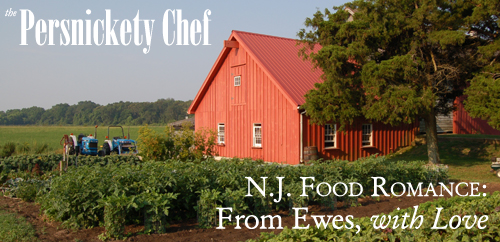
|
Farm photographs by Macy Zhelyazkova. Valley Shepherd Creamery photograph courtesy of Chef Vincent Tedeschi, ACA Chef Educator. Spring is a time to celebrate rebirth and renewal. Soon the farmer’s markets will re-open and fresh local produce will abound.
In the age of a global economy,
where you can go into any superstore and buy any item at any time of the year, I
ask myself, is this a positive trend? As a chef I enjoy being able to use fresh
tuna from Hawaii or Barramundi from Australia and wild strawberries from France.
But should I? This is the real
I recently had the
opportunity to see one of my favorite foods being produced from start to finish.
Dean Kelly McClay, CEC, CCE, of the Academy of Culinary Arts at Atlantic Cape
Community College in Mays Landing, where I teach and otherwise known as my day
job, arranged for us to visit an artisanal cheese maker in Long Valley, New
He sells his products to Manhattan’s finest chefs, at farmers’ markets and in his shop at the creamery where everything from lamb soap to lamb sausage is available. I will admit, it is a little
disconcerting going from holding a newborn lamb to buying lamb chops, but this
is the cycle of life. Then the thought hit me – as chefs we are part of this
chain. We in the culinary profession have an obligation and responsibility to
honor the sacrifices of the living entities, both plant and animal,
that are the
building blocks of our craft. Our place in the chain, from soil to market
Even in tough economic times we have so much more available to us than previous generations. Even though we have more, we have lost contact with the source and soul of food. We expect our food to always be there when we desire it. But it comes with a price. Locally we have seen the sacrifice of fisherman, most recently the crew of the Lady Mary. As you prepare your next meal
think of the long days the farmer or the fisherman who worked to the food to
your table, and of the sacrifices made so you can eat. Take time and
As you prepare this month’s recipes, consider the source of the food. Go to a fish market for the scallops, a farmers market for the produce, a local cheese store or butcher or baker. These craftsmen are also part of the chain of food, and too many of these skills are disappearing for sake of convenience and cost. This month prepare Warm Goat Cheese and Strawberry Salad, Grilled Lamb Chops with Morbier Polenta and Scallops with Grilled Asparagus Lemon Chardonnay Cream. Take your time and raise a glass of local wine to the craftsmen whose passion keeps these skills alive. Until next month, Bon Appétit. Warm Goat Cheese and Strawberry Salad For the salad, blend frisee, Boston bibb, red oak leaf and romaine lettuces (Or your favorite lettuces. Don’t buy a factory mass-produced field green mix). Toss gently with freshly sliced strawberries or whatever berry is local and seasonal For the dressing
Whisk gently. Season with salt, pepper and a sprig of chopped fresh thyme. Toss with lettuces, dressing, strawberries and a handful of lightly-toasted almonds. Top with warm goat cheese. Goat cheese
Dip goat cheese in seasoned flour. Shake off excess and dip in egg wash then breadcrumbs. Refrigerate until firm. Heat small sauté pan. Add 2 tablespoons olive oil on medium heat. Fry goat cheese until golden brown. Turn. Cook other side. Serve on top of salad. Enjoy with a local Pinot Grigio or Riesling. Lamb Chops
Season with salt and pepper. Sear in sauté pan with a little olive oil. Cook until medium rare. (The lamb has sacrificed enough; don’t cook it until it is dry and tasteless.) Remove lamb. Keep warm. Add 1 minced shallot to pan. Sauté lightly. Deglaze with local Zinfandel wine, approximately ½ cup. Reduce. Add 1 cup veal stock. Reduce. Add a few sprigs rosemary. Reduce. Season. Serve with lamb. Morbier Polenta
Polenta should not be thought of as a recipe, but as a ratio. For soft polenta, one part dry (the polenta) five parts wet. I prefer chicken stock and milk with a little butter. Season with salt. Bring to a boil. Whisk in polenta. Lower heat and whisk to avoid lumping. Cook until mixture thickens and is smooth. Fold in a good handful of shredded Morbier or artisanal Gruyere. Taste. Add cheese until it tastes good, whisking to incorporate seasons. Serve with lamb. Scallops
Season with sea salt and fresh black pepper. Sear 4-5 minutes per side in a little clarified butter. Remove scallops. Add 1 shallot, minced. Deglaze with 1 cup local chardonnay. Reduce. Add 1 tablespoon fresh lemon juice and lemon zest plus 1 teaspoon fresh thyme. Reduce by half. Whisk in 5 tablespoons butter, a little at a time whisking off the heat until butter is incorporated. Serve with scallops and grilled local asparagus. |
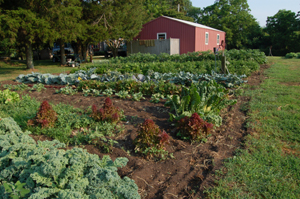 question. With a few keystrokes on the computer
or a couple of cell phone calls I can order anything from around the globe. But
has this caused the food world to lose its soul? Have we grown so used to excess
that we have lost touch with food and its origins? And finally, do we appreciate the
sacrifices that are made to put food on our tables?
question. With a few keystrokes on the computer
or a couple of cell phone calls I can order anything from around the globe. But
has this caused the food world to lose its soul? Have we grown so used to excess
that we have lost touch with food and its origins? And finally, do we appreciate the
sacrifices that are made to put food on our tables?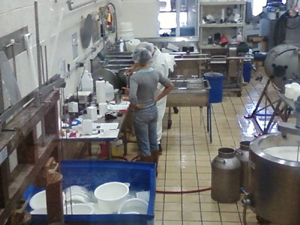 Jersey. The scenery on the two-plus hour trip changed from coastal to Pine
Barrens to rolling hills. At
Jersey. The scenery on the two-plus hour trip changed from coastal to Pine
Barrens to rolling hills. At
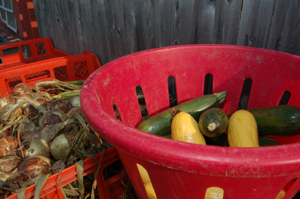 to
table, is to use our best techniques, skills and talent to honor the ingredient.
I am reminded of the opening scene in The Last of the Mohicans when
Hawkeye chases down the deer and after killing his quarry, praises his brother
deer asking for the strength and virtue of the deer to be transferred to him.
Walking the aisles of the local mega mart and seeing the endless packages and
piles of food, it is easy to forget the origins of foods.
to
table, is to use our best techniques, skills and talent to honor the ingredient.
I am reminded of the opening scene in The Last of the Mohicans when
Hawkeye chases down the deer and after killing his quarry, praises his brother
deer asking for the strength and virtue of the deer to be transferred to him.
Walking the aisles of the local mega mart and seeing the endless packages and
piles of food, it is easy to forget the origins of foods. 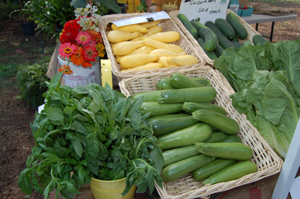 care in
preparing the meal. Slow down. Savor each bite. Appreciate all the work that
went into the plate that gives you sustenance.
care in
preparing the meal. Slow down. Savor each bite. Appreciate all the work that
went into the plate that gives you sustenance.